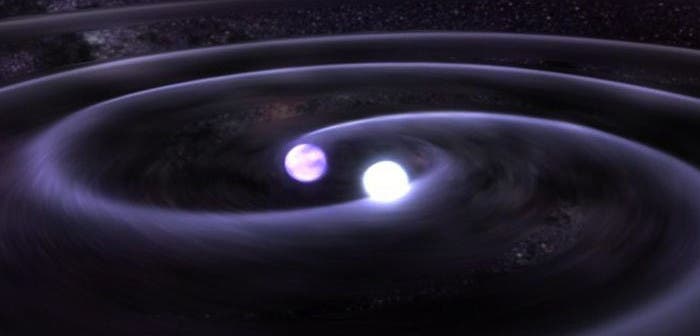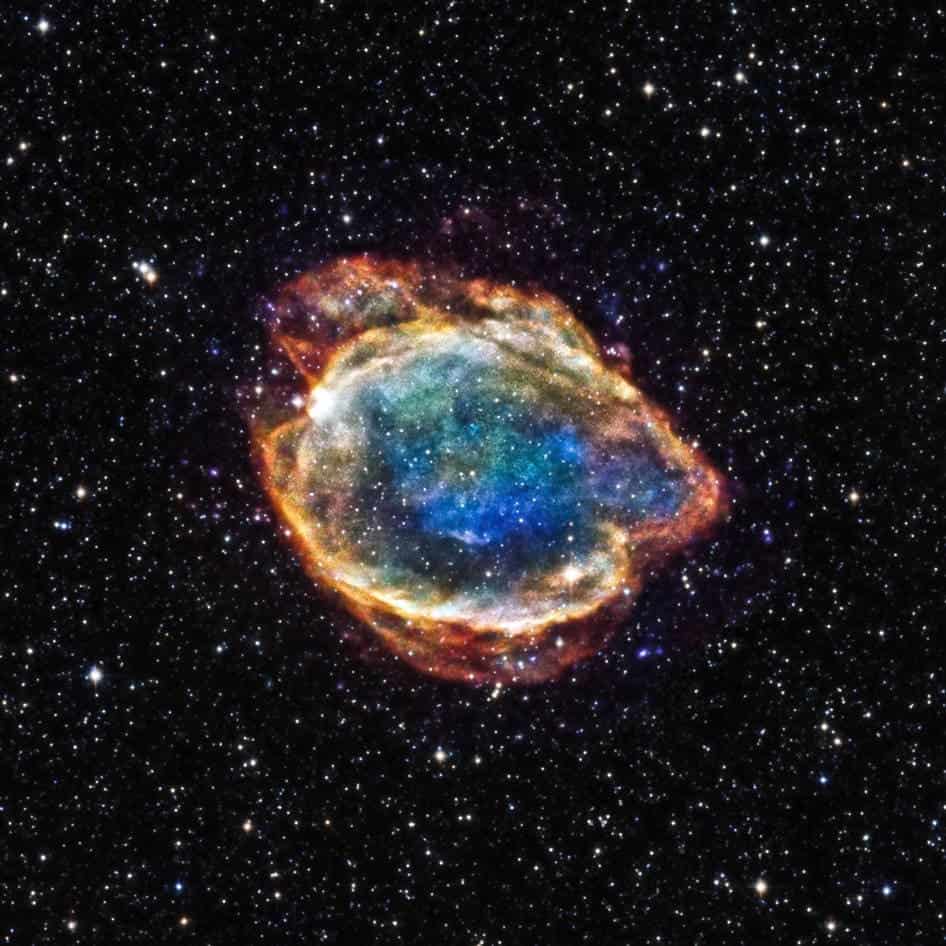It was, by far, the most spectacular discovery of 2017. Gravitational waves not only confirmed a theory proposed by Albert Einstein 100 years ago but also opened up a whole new field of observational science. But they’ve done even more: they’ve shown us how gold was formed.
Colliding worlds
After astronomers observed gravitational waves coming from the collision of two black holes, they’ve now observed the same phenomenon from a different collision: between neutron stars. Neutron stars are the collapsed cores of large stars between 10 and 29 solar masses. After a massive supernova explosion which ejects most of the star’s material, the gravitational collapse compresses the core to incredible densities. Neutron stars are the smallest stars (often measuring only kilometers across), but they’re also the densest. Most models suggest that they comprise almost exclusively of neutrons — hence the name.
For the first time, scientists have observed a collision between two neutron stars. Some 130 light years away, the two stars began an unstoppable dance, drawing closer and closer to each other, until they were spinning around each other more than 500 times per second, distorting space and time as they did so.
[Read a more detailed article on this event here]
The ripples they created spread through the Universe, some of them reaching a planet we call Earth. There, scientists all over the world recorded the observation, realizing its massive importance. Andrew Levan, Professor in the Astronomy & Astrophysics group at the University of Warwick, commented:
“Once we saw the data, we realised we had caught a new kind of astrophysical object. This ushers in the era of multi-messenger astronomy, it is like being able to see and hear for the first time.”
We are made of star stuff
Not only did astronomers record the gravitational waves, but they also used this event to answer several questions. Dr. Samantha Oates, also from the University of Warwick added:
“This discovery has answered three questions that astronomers have been puzzling for decades: what happens when neutron stars merge? What causes the short duration gamma-ray bursts? Where are the heavy elements, like gold, made? In the space of about a week, all three of these mysteries were solved.”
Gold, like most heavier elements, is formed through a process of stellar fusion. In the earlier stages of the universe, only lighter elements like hydrogen and helium existed (in significant quantities, at least). So where did all the others come from?
Well, the early stars burned more and more mass, fusing existing atoms and creating new ones. Going higher and higher on the periodic table, they ultimately reached heavier metals like gold and iron. In a previous article, ZME’s Tibi Puiu explains:
“Finally, as they burnt silicon to make iron, they exploded as a supernova, and for a few short moments, each star would release as much energy as all the regular stars in that galaxy put together. In that cataclysmic explosion, for the first time, atoms of gold were manufactured — and then hurled out into the Universe, along with the other debris from that explosion.”
We — and our planet — are made of star stuff. Many of the atoms that make up our own bodies were formed long ago and far away by massive stars.
A trove of findings
Scientists had a pretty good idea that this is how gold originated, but this is the first time we’ve seen it live. The neutron stars’ collision created as much gold as the mass of the Earth, and also created heavier elements such as platinum and uranium, pumping them into space.
Dr. Joe Lyman, who was watching the collision at the European Southern Observatory, was the first to alert the community of these findings, emphasizing the importance of having direct confirmation of previous theories.
“The exquisite observations obtained in a few days showed we were observing a kilonova, an object whose light is powered by extreme nuclear reactions. This tells us that the heavy elements, like the gold or platinum in jewellery are the cinders, forged in the billion degree remnants of a merging neutron star.”
I’ve never been a big fan of gold, but knowing how it’s formed somehow makes it much more beautiful. It somehow makes everything much more beautiful.











